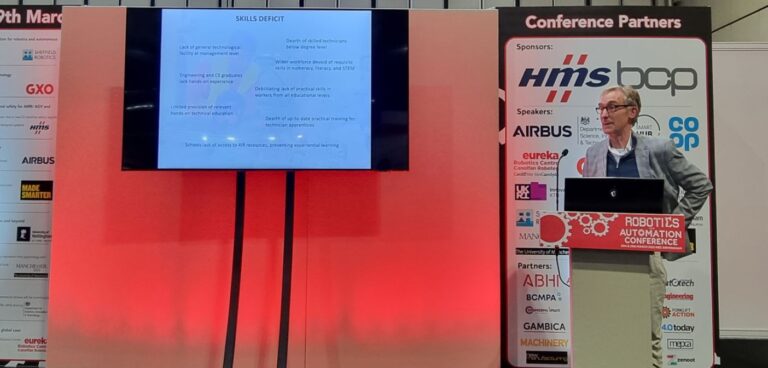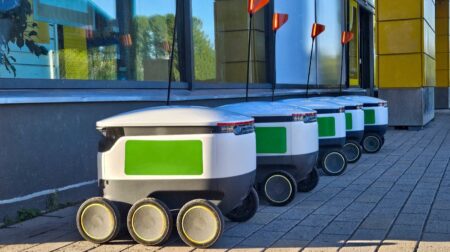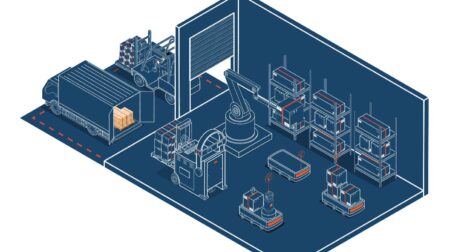The second and final day of this year’s Robotics and Automation Conference is offering visitors more unrivalled insight into the role cutting-edge technology is taking in transforming different industries and is providing a comprehensive learning opportunity for industry leaders to share the secrets to operational success, as well as real-world examples of how the latest technology can be applied to businesses.
Richard Waterstone, consultant at Sheffield Robotics, delivered the keynote session on Day 2 of the Robotics and Automation Conference 2023, highlighting the importance of preparing the workforce of 2030 by enhancing skills and education across the fields of robotics and automation.
Waterstone also provided an overview of a white paper, of which he was co-author: Preparing the workforce for 2030: Skills and Education for Robotics & Autonomous Systems. The white paper was delivered by the UK-RAS Network, which is funded by the Engineering and Physical Sciences Research Council (EPSRC), a non-departmental body of the UK government.
Waterstone dove straight into discussing how automation is going to differentiate the UK workforce by 2030, pointing out that three times more robots are set to appear by 2030. With new technological innovations appearing constantly and robot density increasing all the time, Waterstone emphasised the need to catch up in the race between new technology and education and skills.
To illustrate his point on the future of the workforce, Waterstone took the audience back to the past – specifically the 19th century and the rebellion of the Luddites. The infamous anti-machine protesters were used as an example to illustrate something he described as ‘creative destruction’ through robots and automation – whereby machines simultaneously destroy jobs and create them.
This, he said, was already happening hundreds of years ago, where, instead of killing a way of life and opportunities in the cloth and weaving industries, machines instead automated a massive amount of the labour and created masses of new jobs.
The idea of creative destruction was a cornerstone of Waterstone’s presentation, with him explaining that automation and robotics were key to re-shoring manufacturing and increasing skills and productivity when the UK is currently “drastically trailing its competitors in Europe”. This, he said, requires a change of play in the UK’s education landscape, with the best way to get more people to overcome their fears of, or become interested in technology, being to actually let them use it.
He also offered an overview of some of the major challenges facing the UK when it comes to skills and education provision around robotics and automation. These included: a dearth of degree-level qualified engineers and practical skills both across the workforce and within education/those leaving it, as well as what he described as a “lack of technical understanding at management levels across UK companies… which hinders the adoption of robotics and automation and the envisaging of an automated future”.
This, Waterstone continued, was despite a “strong theoretical knowledge of robotics and automation, resulting from the UK having some of the world’s best universities”. One of the solutions to promote stronger practical knowledge that he presented came in the form of new mini robotic factories, which could be deployed as mini and mobile hubs throughout UK communities through Skills and Education in Robotics and Autonomous Systems (SERAS).
SERAS is part of the UK-RAS Network, and is championing the development of such centres of innovation to offer the wider public access to high-end resources and a range of relevant robotics technologies used in real-world employment.
During the post-presentation Q&A, Waterstone addressed questions on the hubs and expanded on SERAS’s thinking, saying that not enough data exists on how having tangible access to, and contact with, machines can enhance skills provision and learning, and that this pilot is an opportunity to enhance understanding in this area.
Another key touchpoint of the presentation included the issues with lack of diversity in terms of both gender and race across the robotics and automation sectors, which compromises opportunities for innovation by leaving out a wealth of potential workers. Waterstone said he hopes that access to these miniature factory settings could expose a greater number of people to robotics, thereby increasing representation across the STEM industries.
On a final note, Wasterstone also addressed some of the other findings of the whitepaper. These included that practical skills did not feature nearly enough on the national curriculum, and that high-quality resources needed to be made available through the form of a national public repository of high-end digital resources and robotics. He also mentioned that knowledge diffusion was the best way to keep the UK up to date with best international practice.









